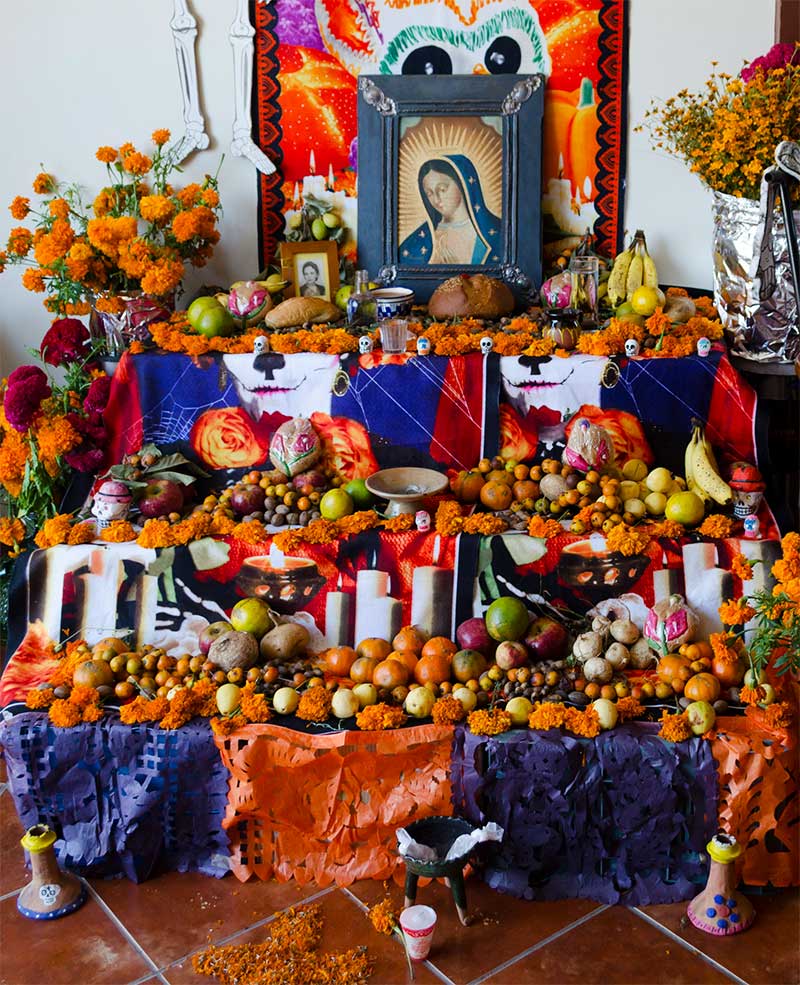Submissions for images of altars or loved ones will be open on
September 7, 2021 and will close on October 15, 2021
The virtual altar will be available for viewing on this page starting on October 25, 2021
Día de los Muertos (or Day of the Dead) is a celebration in Mexico, and many areas of the U.S., when
families gather together to honor the memory of deceased loved ones on November 1
and 2. Spirits are guided home to enjoy offerings left for them on meticulously crafted
ofrendas (altars). This days’ roots are a fusion of traditions found in Mesoamerican
and Europe. Scholars trace the origins of this celebration back hundreds of years
to Aztec festivals held during the summer. After colonization, the festivities were
shifted to coincide with “All Saint’s Eve”. Since then, the festivity has been celebrated
all over the world and centers on honoring, remembering, and celebrating the lives
of those who have departed. In the U.S., the celebration is often conflated with Halloween.
The holidays, however, are very distinct in purpose, spirit and tradition. It is important
to distinguish them one from another as a means of respecting and honoring the diversity
of cultures.
Elements of an ofrenda

- Arch: The arch represents the passage between life and death
- Fire: Fire in the form of candles and torches are symbols of the love for our deceased
relatives and are guiding lights for their spirits
- Paper: Ofrendas typically have “papel picado” or tissue paper with intricate designs. They
are a representation of the union
between life and death, the wind and the fragility of life
- Portraits: A photo of the deceased loved one to whom the altar is paying tribute is placed at
the top and the middle of the altar
- Incense: A chalice with incense is placed on the altar. It is a way to purify the souls of
the dead and ward off evil spirits.
- Toys: Toys are used on altars dedicated to children who have passed away
- White cross: A white cross today comes from Christianity but originates as a way to signify the
four cardinal directions of north, south,
east and west. The altar has evolved through the centuries, as the Catholic overseers
of post-conquest Mexico incorporated indigenous ideas
- Sugar Skulls: “Calaveras” or skulls are representations of deceased relatives. Made of sugar or
chocolate and often consumed by kids
after the celebration. They are an example of Mexican ability to celebrate, mock and
play with death
- Banquet: To celebrate the arrival of deceased loved ones, their favorite foods and drinks
are placed on the altar as an offering
- Water: A glass of water if often placed on the altar to quench the thirst of the deceased
and strengthen them for their return journey
- Flowers: Flowers are not just a beautiful addition to the altar.
Yellow flowers: or “Cempazuchitl” are a guide for the spirits into the mortal world.
White Flowers: Represent the sky
Purple Flowers: Are the traditional color of mourning in Mexico
- Levels: “Ofrendas” can be made with several levels
2 levels: represent the division between the earth and sky
3 levels: represent the sky, earth and underworld
7 levels: are the most common and relate to the 7 levels that the soul must traverse
before reaching (heaven) or hell.
It also relates to the 7 deadly sins.
Questions? Contact Ali Phelps at allison_phelps1@cuesta.edu
Download the event flyers below: